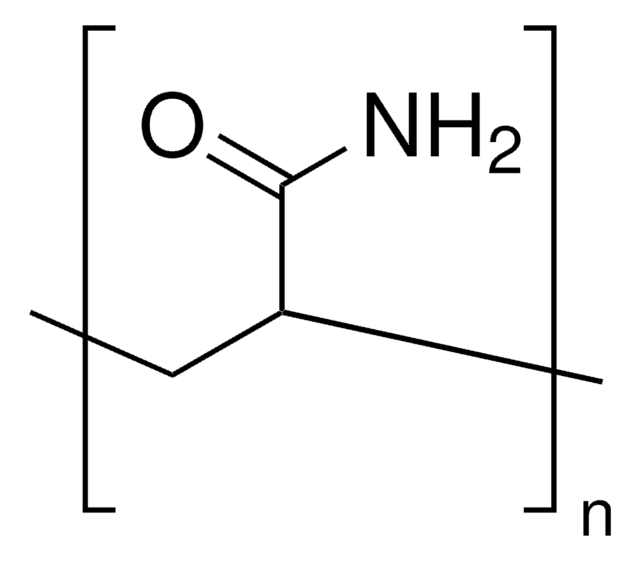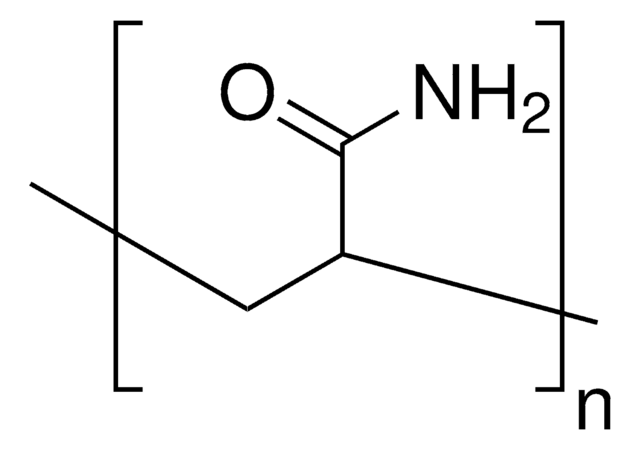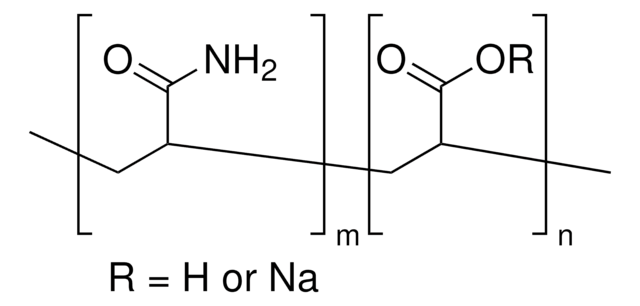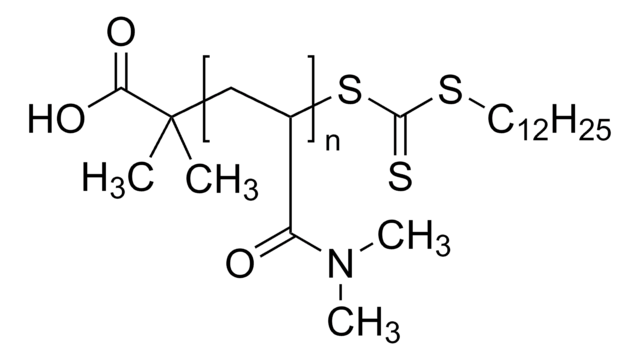738743
Polyacrylamide
average Mn 40,000
Sinónimos:
PAM
About This Item
Productos recomendados
form
powder
mol wt
average Mn 40,000
mp
246-250 °C
transition temp
Tm 246-250 °C
InChI
1S/C3H5NO/c1-2-3(4)5/h2H,1H2,(H2,4,5)
InChI key
HRPVXLWXLXDGHG-UHFFFAOYSA-N
¿Está buscando productos similares? Visita Guía de comparación de productos
Application
- Proteomic analysis and lethality of the venom of Aegaeobuthus nigrocinctus, a scorpion of medical significance in the Middle East.: This study utilized polyacrylamide gel electrophoresis (PAGE) to analyze the protein composition of the venom, providing insights into its biochemical properties and potential medical applications. The results highlight the importance of PAGE in venom proteomics and its relevance in biomedical research (Borges et al., 2024).
- One-Dimensional Acrylamide Gel Electrophoresis for Analysis of Plant Samples.: This paper describes the methodology of using PAGE for the analysis of plant proteins, demonstrating its utility in biochemistry and molecular biology studies. The technique is essential for separating and identifying proteins in complex mixtures, underscoring its significance in research and development in the life sciences (Marzban et al., 2024).
- Protocol for isolating small cytosolic dsDNA from cultured murine cells.: The study outlines a detailed protocol incorporating PAGE for the isolation and analysis of small cytosolic dsDNA from murine cells. This method is pivotal for research in molecular and cellular biology, facilitating advancements in genetic and biomedical studies (Dai et al., 2024).
- Comparative study of the commonly used protein quantitation assays on different Hymenoptera venoms: A fundamental aspect of Hymenoptera venom proteome analysis.: This research compares various protein quantitation assays, including PAGE, to analyze Hymenoptera venoms. The findings underscore the critical role of PAGE in proteomic analysis and its application in toxinology and biomedical research (Wanandy et al., 2024).
- Proteomics and Its Current Application in Biomedical Area: Concise Review.: This review highlights the applications of proteomics, including PAGE, in biomedical research. It discusses the advancements and future directions in the field, emphasizing the importance of PAGE in proteomic studies and its contributions to biomedical science (Gobena et al., 2024).
Storage Class
11 - Combustible Solids
wgk_germany
WGK 2
flash_point_f
Not applicable
flash_point_c
Not applicable
Certificados de análisis (COA)
Busque Certificados de análisis (COA) introduciendo el número de lote del producto. Los números de lote se encuentran en la etiqueta del producto después de las palabras «Lot» o «Batch»
¿Ya tiene este producto?
Encuentre la documentación para los productos que ha comprado recientemente en la Biblioteca de documentos.
Artículos
Highlighting existing and novel fabrication methods for both, solid and hydrogel-based scaffold for tissue engineering applications.
Nuestro equipo de científicos tiene experiencia en todas las áreas de investigación: Ciencias de la vida, Ciencia de los materiales, Síntesis química, Cromatografía, Analítica y muchas otras.
Póngase en contacto con el Servicio técnico





